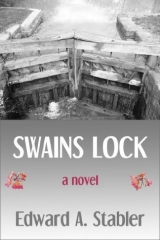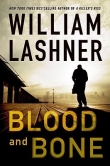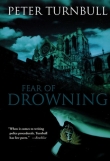
Текст книги "Swains Lock"
Автор книги: Edward A. Stabler
Жанры:
Триллеры
,сообщить о нарушении
Текущая страница: 4 (всего у книги 25 страниц)
“The studio is called Thomas, Ainge, and her name is Kelsey Ainge,” he said.
“Sure,” Abby said. “Her studio has been around for years. They’re good but expensive. And most people find Kelsey a little strange.”
“Strange how?” Nicky said.
“Well, she’s kind of…” Abby said, and then paused. “What’s the right word? Unorthodox, maybe. Unpredictable.”
“She’s lived through some tough times,” Doug said. “Her husband was a big-time neurosurgeon at Georgetown Hospital. He died a few years ago in a one-car crash.”
“Was he driving drunk?” Nicky asked. “Icy roads?”
“Neither,” Doug said. “But they found high levels of valium in his blood – enough that he never should have been driving. His family said he’d been drugged.”
“Did they have kids?” Nicky said. Abby shook her head.
“Still, that must have been pretty hard on Kelsey,” Vin said.
“Well, maybe,” Doug said. “She didn’t seem to grieve very long. The rumor at the time was that her husband was having an affair with a surgical resident. Kelsey inherited a few million and a mansion off River Road. She was dating another guy within months.”
“So maybe things haven’t been so tough for her after all,” Vin said.
“Not recently, anyway,” Doug said. “Her close scrape was a long time ago. I remember it was in the papers when I was in college, just before the flood of ‘72.”
“Flood,” Nicky said. “On the Potomac?”
“Huge flood,” Doug said. “The kind that happens once a generation or so. Usually from a tropical storm or the remnants of a hurricane that dumps rain over the whole Potomac watershed. If you want an indication, go to the Great Falls overlook on the Virginia side. They have a wooden post on the lawn near the observation deck that shows the river level during different floods. The lawn is about seventy feet above the river, and the 1972 level is six feet up the post. That’s all because the river gets funneled into a narrow channel at the Falls.”
Vin shook his head in disbelief. “Seventy feet?”
“Or go twenty miles upstream to Whites Ferry on the Maryland side,” Doug said. “The river’s much wider there, but the 1972 flood level is painted halfway up the second-floor wall on the ferry operator’s house.”
“I’ve seen the mark on the wall,” Abby said. “It’s hard to imagine.”
“That’s where her accident was,” Doug said.
“You mean Kelsey?” Nicky said.
Doug nodded. “She was with another girl and a guy – friends from college I think – when their car drove off the back of the ferry in the middle of the river and sank to the bottom.”
Vin issued a low whistle. “How could that have happened?”
“I guess the car got shifted into reverse and blew through the retaining gate or something,” Doug said. “Rumor was they were smoking pot.”
“But they got out OK?”
“Kelsey got out OK,” Doug said. “She was pulled out of the water by a rescue boat.”
“What about her friends?” Nicky said.
“They drowned,” Doug said. “A diving team went out for them and they recovered the guy’s body from the car later that day. They kept searching for the other girl, but the river started rising and they had to suspend the search. They never found her. She disappeared in the flood.”
“That’s horrible,” Nicky said.
“It’s strange that Kelsey was able to get out and the other two weren’t,” Vin said.
Doug nodded. “Strange is a good word for it. When they raised the car, the windows were open. Maybe the other girl got out but couldn’t swim. Or maybe she was knocked unconscious and drowned.”
“How about the guy?” Vin asked. “Why couldn’t he escape?”
“He never had a chance. He had a seatbelt knotted around his ankle.”
Chapter 5
Sightseeing
Saturday, October 28, 1995
Vin finished his leftover jambalaya and walked to the bookcase in the living room, where he pulled out a topographic atlas for the state of Maryland he’d bought recently. He opened to the page that covered the Potomac River northwest of Washington, D.C. From the intersection of River and Falls – the center of the village of Potomac – he traced River Road four miles northwest to River’s Edge Drive. A left turn, and then two more turns on sinuous neighborhood streets took him to Ridge Line Court. His finger continued past the cul-de-sac to the canal, less than a quarter-inch away on the map. That quarter-inch was the yard behind his house, the wooded hillside beyond it, and the meadow next to Pennyfield Lock. The map showed the border surrounding the canal in green, denoting the area of the National Historical Park.
He traced the path of the Potomac River from Pennyfield Lock down to Great Falls, five-and-a-half miles downstream. A splintered clot of islands split the river from just above Pennyfield to just below Swains, after which the river narrowed and regained focus, passed to either side of oval Conn Island, and then was compressed into a writhing torrent by Olmsted Island before plunging over the Falls. Olmsted. Kelsey Ainge had mentioned that name while looking at the old photo of Lee Fisher and K. Elgin at the Falls.
He read the island names from the Falls back up to Pennyfield: Olmsted, Conn, Bealls, Minnehaha, Gladys, Claggett, Sycamore, Watkins, Grapevine, and Elm. Watkins Island dwarfed and overlapped the rest of them, beginning near Pennyfield and stretching almost to Swains. He and Nicky had watched the beaver swimming between Watkins Island and their picnic spot on the Maryland shore a week ago.
It was almost 1:30, so Nicky should be home in about an hour. They had planned to ride their bikes down the towpath to Great Falls. He looked out the sliding glass doors – mostly cloudy, but still warm for late October. It would be good to get outside, since he’d spent most of the rainy week at his makeshift desk in the first-floor office. On Monday, he’d sent e-mail to his former boss saying he was ready to get started on the technical-support database project. By the time you’re thirty-five, maybe it’s harder to be unemployed for a while without feeling guilty, he thought. It certainly seemed as if Nicky had brightened when he told her that he was starting his consulting work. He’d spent the rest of the week wading through documents from Weill Networks and roughing out a database structure and programming requirements. This morning he’d e-mailed his thoughts back to ‘Rottweiler’ for comments. Now he needed to read a couple of books on scripting languages, but that could wait until Monday.
He sat on the couch and studied the photo and note he’d found in the shed last weekend. The scene in the photo was his destination today. He re-read Lee Fisher’s note to “Charlie”, and was struck by the line: “In your search for me you may find the truth.” What truth was it that Lee hoped Charlie would find? Did it relate to the money, the killers, the dead… or something else? He was vaguely aware that this question was gaining a foothold in his psyche, like a virus that had infiltrated his bloodstream at imperceptible levels but was steadily consolidating its presence. He almost felt as if Lee’s directive applied to him, or that perhaps he had inherited the task from Charlie.
If Charlie never found Lee’s note, then no one else would find it now. Vin had replaced the planks in the shed this morning, but kept the drill, the photo, and the note. So in a sense, he thought, he had picked up a torch that Charlie never carried. And if he could find Lee, maybe Vin could find the truth – whatever truth that was. With a wry smile, he wondered if this meant the last line in Lee’s note would also apply to him. “Be careful you don’t share my fate.”
Nicky got home and drank a glass of iced tea with him in the kitchen. She eyed the open atlas, note, and photo on the living-room table and shook her head in mock reproach. “I thought you had work to do today,” she said.
“I did. I finished what I needed to finish and sent it in. And I put the planks back in the shed. Let’s get our stuff and head out.” They changed into biking clothes and went down to the first floor to collect their bikes and helmets from the storage area, passing the V+N driftwood mobile hanging in Vin’s office. It spun slowly, acknowledging their presence.
“I like it,” Nicky said. “It reminds me how close we are to the river.”
“I agree,” Vin said. “It’s like it connects us to this place.”
They carried the bikes out the sliding door, wheeled them across the back lawn, and walked them down the wooded path toward the old Pennyfield House at the bottom of the hill. The trees were slowly enveloping it. “It almost looks haunted”, Nicky said as they passed the eroding structure. They crossed the meadow and the footbridge and turned left onto the towpath.
“After you,” Vin said.
“Lazy,” Nicky answered. She stepped onto the pedals and rode away downstream.
***
Two hundred feet upstream from Pennyfield Lock, Kelsey stood in the trees abutting the towpath. With binoculars pressed to her eyes, she looked like one of the many birdwatchers stalking herons or hawks at the nearby Dierssen Waterfowl Sanctuary. The sanctuary was a short walk ahead, tucked beneath the canal and the river, but Kelsey was facing away from its ponds and birdhouses, peering instead at the meadow near Pennyfield Lock. She watched Vin and Nicky emerge from the woods and cross the meadow with their bikes. As they rode away, she put her binoculars in the jacket pocket that held her photographer’s loupe. Checking her watch, she stepped out onto the towpath, telling herself to be back in an hour. She headed down to the lock and across the footbridge and meadow, found the path she’d seen them descend, and started up the hill.
***
As Vin and Nicky approached the Great Falls Visitor Center and its long parking lot, the towpath grew crowded with pedestrians, so they dismounted and walked their bikes. Vin admired the Visitor Center as they walked by. Like the majority of canal structures, it was built on the berm side of the canal, since the river side and the towpath were generally inaccessible to carriages and cars. The building was a T-shaped whitewashed stone house, with its tall façade oriented upstream on the head of the T. The long axis faced the canal and offered a patio shaded by a portico roof projecting from the base of the second story. Two whitewashed chimneys on each axis gave the building an air of dignified ease.
A nearby sign stated that the building had been constructed as a locktender’s house in 1829, then enlarged twice in the ensuing years as it evolved into Great Falls Tavern. For 19th century Washingtonians who took overnight pleasure cruises up the canal from Georgetown, it served as a destination, a tavern, and an inn. But then as now, its proximity to the Falls was the main attraction.
Vin noticed that the path from the parking lot to the Visitor Center was decorated with carved pumpkins and paper-bag lanterns. Cardboard signs pointed arrows toward a goldmine and a mock gallows. A hanging banner over the gallows read “Life and Death on the Canal.”
“Must be for some kind of Halloween event,” Nicky said.
Vin nodded. “I wonder who they’re hanging tonight.”
When they reached the Falls trailhead, they locked their bikes in the rack and walked onto a cement arch that crossed a spur of the Potomac. The water in this tendon of river was white and flying and Vin was startled by its power and speed. The arch led to a wooden boardwalk that zigzagged across Olmsted Island, which a nearby sign explained was a rare example of a bedrock terrace forest. Vin noticed that the trees were all shorter and thinner than those along the canal, and that the leaves, moss, and pine needles that formed the ground-cover lay on a foundation of roots and rock, rather than topsoil. The sign claimed that trees and vegetation on Olmsted Island were periodically carried away by massive floods on the Potomac.
“It does look like this island has a different ecosystem,” Nicky said. “Everything looks miniaturized… almost fragile.”
“Like a bonsai version of the plants and trees up the hill,” Vin agreed. The walkway wove around rocks and depressions before crossing a rocky, fissured gully studded with pools of stagnant water. The roaring they had heard in the background for the last few minutes grew louder. Around a short ridge and past a swampy basin they reached the observation deck, which was mounted fifty feet above enormous rocks at the base of the cliff. They found an opening between sightseers at the railing and felt the cool breeze that drifted up to the platform from the river below. Vin’s eyes were drawn to the cycling clouds of spray where water pierced water at the base of the Falls. For a few seconds he felt hypnotized, unable to focus elsewhere.
“Unbelievable,” Nicky said, raising her voice against the roaring. “This is ten times bigger than I expected.”
Vin blinked his hypnosis away. “Even though you’d seen the photo of the Falls?”
“The scale must be hard to capture in a single shot. And the motion.”
Vin nodded. What the 1924 photo of Lee Fisher and K. Elgin at Great Falls couldn’t convey was the animation of water following every possible path downstream. At the head of Olmsted Island, the river was a half-mile wide as it slipped around and over a field of large rocks. As the island emerged on the Maryland side, a dented and fissured phalanx of rock pushed into the river from the Virginia side, framing the top of the Falls. Great Falls itself was a flowing staircase of three arch-shaped drops, each over twenty feet high and split and twisted by immense knuckles of fractured rock worn smooth like putty. Between the upper, middle and lower drops, the river crawled downstream through staggered boulders as a fabric of waves and haystacks, with thousands of white veins writhing and twisting across its sliding body of jade. The split currents converged again at the base of the Falls, pulsing downstream as a train of standing white-maned waves.
Vin looked across the river at the crowded observation decks atop the cliffs on the Virginia side. “We’re both looking at the same thing,” he said, “but what we’re seeing is entirely different.”
Retracing their path along the boardwalk, Vin studied the landscape of rocks, scrub pines and scrawny hardwoods. What generation of this island’s trees was he seeing now? The hundredth? Thousandth? Millionth? He tried to visualize the scope and power of a flood that could – that had, that would again – wash all this away. Like the people who had walked here, he thought, and fished and hunted above and below the Falls across a hundred generations, and left no trace except a handful of petroglyphs hidden in the rocks along the river. They must have left their bones here, too, interred in the underwater caverns and sieves that lace the Falls. He pictured the degraded bones of those who disappeared in the cataracts a thousand years ago embracing the swollen flesh of a recent arrival, a wader who had slipped into the river above Great Falls this summer and was never seen again.
From the corner of his eye, he saw a flash of motion in the woods upstream from the walkway. He stopped to track it, hands on the railing as Nicky walked on. Too large for a squirrel or a small mammal, but very quiet. Could it have been a deer? Was the island big enough for deer? Peering at the scrawny trees and moss-stained rocks, he couldn’t see anything moving. Whatever he’d seen was out of sight now, eclipsed by a rock or hidden in a depression. He turned back to the boardwalk and saw Nicky swing along its next leg, ten paces ahead, hands stuffed into her pockets, shoulders relaxed and low. Her short brown hair bounced and gleamed in sunlight, and her legs swung a slender arc as her biking shoes struck the planks underfoot. Animal grace, he thought, following her now, closing toward her through a mist of alienation. He didn’t really know Nicky; they were both just animals hunting. For what, he wasn’t sure.
She slowed to look back as he approached. “You OK?”
He nodded. Nicky’s eyes were warm and inquiring and he remembered visiting her during her residency at Tufts and watching her reassure an elderly man that his cat should recover completely from an eye infection. The man had said nothing, just exhaled in relief, but Vin saw his eyes water and the tension in his gnarled hand relax as Nicky spoke. Vin caught her hand with his own and they fell in step together. “I thought I saw something.”
***
As the path reached the top of the hillside and emerged from the trees, Kelsey paused to assess the backyard of the house in front of her. Seeing no humans or canines, she stepped forward onto the lawn. She was pretty sure the dog was home somewhere, and she reached into her jacket pocket for reassurance that the rawhide bone she’d brought was still there. She found it underneath her camera and pulled it out. With luck, she thought, the dog will be out on the deck like he was last weekend.
She’d only seen it from the front and the foyer, but the split-level house looked familiar. The second-story deck ran almost the length of the house and was connected by glass doors to a living room. Another set of glass doors below the deck opened into the first floor. She walked toward these doors. When her boots crunched the gravel under the deck, she heard a bump overhead, followed by a clattering of toenails and a rolling chorus of barks. She backed onto the lawn as Randy lunged to the railing and continued his guttural assault.
“Hey, buddy,” she said. “You’re a good watchdog. How about a reward?” She lobbed the bone up to the deck and it landed with a rattle that drew the dog’s attention. She proceeded to the sliding door and pulled the handle; it slid open. Cyclists are so predictable, she thought.
Her eyes adjusted to the unlit room. A mobile of smooth sticks hung from the ceiling in front of her. To the right, she opened and closed a door to an unfinished storage and laundry area. A door to her left opened into a dark garage. Along the wall near the stairs was a slab desk propped on sawhorses. The desk was anchored by a monitor and keyboard, and a skewed arc of printed pages and programming books radiated out from its center. She glanced at the books and leafed through the papers, finding nothing of interest, then continued toward the stairs.
In the foyer at the top, she recognized the table she’d seen last weekend, which now held only the morning’s unopened mail. Up another half-flight to the living room, and then a hallway to her left, leading to bedrooms, she assumed. Bone in mouth, the dog stared at her through the glass door to the deck. She heard him growl intermittently, but he didn’t seem to think her presence merited a serious protest. She turned her back and reviewed the bookshelves on the inner wall.
Books on software and computer networks. Books on biology, medicine, physiology. Travel books and well-known novels. Nothing worthy of examination right now. She circled around to the kitchen. Again nothing. She glanced out the window to confirm that no one was watching the house, then advanced to the breakfast nook. On the table she found what she’d come for: the old photo of Great Falls.
Touching only the edges, she picked it up and studied it closely. When she turned it over, she saw the attribution in pencil on its back:
R. L. Fisher and K. Elgin at Great Falls
March, 1924
The names meant nothing to her. Her eyes fell on the torn ledger page on the table, which she leaned over to read:
March 29, 1924
Charlie,
If it is April and I am missing, I fear I have been killed because of what happened today at Swains Lock. I may be buried along with the others at the base of three joined sycamores at the edge of a clearing. The name of the place is well knowed by Emmert Reed’s albino mule. One tree leads to the money, the second leads to the killers and the third leads to the dead. In your search for me you may find the truth. Be careful you don’t share my fate.
Your friend, Lee Fisher
Her eyes widened. What had happened at Swains Lock in 1924? That was a long time ago, but she had lived less than a mile from Swains for ten years and had never heard of anything. This note from Lee Fisher… the same person as R.L. Fisher in the photo? So the girl was K. Elgin? She reached into her pocket for her camera and took two shots of the note. Then she carried the photo to the kitchen counter to study it under the light.
An attractive young couple, she thought. Was Lee too young to grow a mustache? He might be nineteen or twenty and the girl a little younger than that. Even juxtaposed against the Falls, her eyes and enigmatic smile drew your attention. Kelsey fished the loupe out of her jacket pocket and bent toward the photo. She panned the loupe slowly from top to bottom over the couple in the center of the image, then drew a sharp breath and felt the hair stand up on the back of her neck. “K. Elgin,” she whispered. “I know you.”
***
When they crossed from Olmsted Island back onto the towpath, Vin unlocked the bikes. They wheeled them back toward the Great Falls Visitors Center.
“Lock 18,” he said, reading a small wooden sign as they passed one of the locks. Like many of the others he had seen, this one was in disrepair, its gates and swing beams decaying. “So that next lock must be Lock 19, and then Lock 20 in front of the Visitor Center.”
Nicky looked at him. “You clearly have a talent for numbers.”
“Three locks in only a couple hundred yards,” he continued. “I guess that’s why there’s a noticeable slope here.”
“You may want to write this up. Maybe get some funding for a study.” Vin pushed her shoulder with his palm and she almost fell onto her bike, laughing as she regained her footing.
“Let’s find out what all the Halloween stuff is about,” he said as they approached the Visitor Center. They steered their bikes onto the footbridge over Lock 20 and walked toward the patio. Nicky nudged him and pointed to a woman wearing a Park Ranger’s uniform and talking to a couple with a young girl. Vin caught her attention as the family strolled away.
“Is there some kind of Halloween event going on here?”
“There sure is,” she said brightly. “Tonight we’re staging Life and Death on the C&O Canal. We do it every year on the Saturday before Halloween.”
“What’s that?” Nicky asked.
“Well, we set up a haunted walk… around the Visitor Center, and past the entrance to the goldmine up the hill there.” She pointed toward the signs and pumpkins that Vin and Nicky had noticed earlier. “And we put on a play about some event from the canal era. It’s different every year. This year we’re re-enacting a shootout between the police and the notorious gangster Finn Geary from the 1920s. His syndicate sometimes used the canal to smuggle moonshine whiskey into Georgetown during Prohibition.”
“We’re tied up tonight,” Nicky said, “but it sounds like fun.”
“Well if you’re interested in the canal era, there’s a talk going on right over there about the history and operations of the C&O,” the ranger said. She pointed to a dozen people standing next to an old canal barge that was up on blocks on the dirt driveway.
As the ranger walked away, Vin cocked his head toward the barge. “Let’s go listen for a minute,” he said. But the group was already walking toward them, following another uniformed ranger. He strode purposefully by, wearing a flat-brimmed straw hat, wire-rim glasses, and a bushy salt-and-pepper mustache. The group followed and formed a half-circle around him as he stood on the stone wall of Lock 20, midway between the gates. Vin and Nicky walked their bikes within earshot. Vin noticed that Lock 20 was well preserved, probably because it was used for demonstrations. Like all the other locks he’d seen, its upstream gates were closed and downstream gates open, leaving it with thigh-deep water.
The ranger resumed his presentation. “From the time the C&O opened in 1850 until it closed in 1924, the canal went from one financial crisis to another. Floods and breakdowns were a headache, but the main problem was that the C&O was competing with the Baltimore and Ohio Railroad from the start. And the railroad got bigger, faster, and cheaper year after year, until the canal couldn’t compete.
“In the first few decades the canal carried timber, limestone, grain, and other agricultural products, but the only cargo that ever really amounted to anything for the canal was coal. During the later stages of the canal era, coal accounted for over 99% of the business.”
He pointed back to the barge the group had just examined. “That barge is essentially identical to all of the barges that carried coal down from the Cumberland mines in the later years. Not surprising, since after 1890 all the coal barges were built and owned by the Consolidation Coal Company. Anybody want to guess who owned the Consolidation Coal Company?”
“Rockefeller?” said a fleshy man at the front.
“Nope. The Baltimore and Ohio Railroad,” the ranger said with a conspiratorial squint. “In fact, toward the end the B&O Railroad owned the canal, too. But that’s another story.” He shifted his stance and cleared his throat.
“Anyway, that coal barge behind you is ninety-three feet long and fourteen-and-a-half feet wide. And all the locks on the canal are a hundred feet long and fifteen feet wide. So you can see that putting a barge through a lock was a pretty tight squeeze. And the boats coming downstream loaded with coal had momentum – they were hard to stop. So they would use a snubbing post to bring the boat to a halt inside the lock. That would keep it from crashing into the downstream gates.” He turned and pointed to a waist-high cylindrical post about six feet back from the opposite lock wall. “A boathand would wrap a heavy rope from the boat around the snubbing post and the boat would come to a stop as the rope tightened.”
He spun back toward his audience. “Most boat captains would tie up for the night somewhere along the berm side of the canal by ten or eleven, but some captains wanted to make the circuit from Cumberland to Georgetown and back as fast as possible, so they kept their boats moving around the clock. That meant a locktender had to be ready to lock a boat through at any time of day or night. So most of them would sleep in a shanty near the lock. That way they could hear the mule driver yell or blow a horn when a boat was approaching.”
“Now a boat like that one,” he said, gesturing back to the barge again, “would be carrying over a hundred and ten tons of coal down the canal. So the boatmen would call that a ‘loaded boat’, and it would ride low in the water and be hard to start or stop. After unloading its cargo in Georgetown, it would head back upstream as a ‘light boat’. With boats coming and going at any time, locktenders would usually keep their locks set for a loaded boat. That means the upstream gates would be open and the downstream gates closed. So a loaded boat could drift right in and be snubbed to a stop. Then they would close the gates behind it.”
Vin stepped away from the group for a better view of the upstream gates. Each was a thick wooden door that pivoted around a wooden post set into the lock wall. When closed, the gates formed a shallow V-shape, which helped them seal tightly against each other and withstand the water pressure they faced when the lock was empty. The pivot-posts each supported a heavy swing-beam that was a foot wide and a foot thick. These swing-beams converged at the juncture of the gates, and from there angled upward and outward, reaching the height of a man’s waist at their distal ends, a dozen feet outside the lock walls.
Planks had been nailed to the upstream faces of the swing-beams to create a V-shaped walkway across the lock when the gates were closed. At least one set of lock gates had to be closed at all times, Vin realized, so during the canal era there was always a way to cross the lock on foot, even without the footbridges.
The ranger was still talking. “Once a boat was in the lock and all the gates were closed, they needed to drain the water out of the lock to drop the boat. Anyone know how they did that?” The ranger pointed to the only child present, a boy of ten or eleven standing next to his parents. “How did they get the water out of the lock?”
“Through those windows at the bottom of the doors,” the boy said.
“That’s right,” the ranger said. “But you mean the windows at the bottom of those doors,” he said, gesturing toward the downstream gates. “Those windows are called ‘wickets’, and the wooden panels that fit snugly inside the wickets are called ‘paddles’. The paddles can be rotated to open or close the wickets.” Vin studied the bottom of the gates. Each door had two wickets, and the paddles were actually more like wooden spatulas, with iron stems that ascended the back sides of the gates and pierced the swing-beams, extending another foot or so into the air. The stems terminated with butt-ends that he guessed were designed to mate with sockets on the lock-keys. All four lock-keys had been removed.
“When the water in the lock dropped to the level of the canal” the ranger said, “the locktender would push the swing-beams until the downstream gates were flush against the walls of the lock. You can see,” he said, pointing again, “how the walls have indentations to hold the open doors. Remember, getting the boats in and out was a tight squeeze!
“Then the mule driver would untie the snub-line, start the mules moving down the towpath, and pull the boat out of the lock and down the canal. To lock a light boat through upstream, the process was reversed.” He described it, using gestures to mimic the opening of gates and turning of lock-keys. Two people stepped away from the group and Vin sensed the speaker was losing his audience. The ranger raised his voice.
“One more question I forgot to ask you. Who knows the difference between a canal and a river?” No one replied so he sought out the boy again. “Can you tell me the difference between a canal and a river?”
“Sure. A river flows. A canal just sits there. And a river has fish in it.”
“The canal has always had fish in it. Even eels,” the ranger replied.








